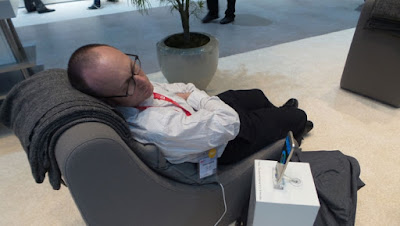BERLIN—We've been waiting a while for Samsung's new SmartThings smart-home package, which the company first talked about at CES in January. It's here now, and it looks sleek.
The new SmartThings hub is small, white, and costs $99. It hooks into a bunch of sensors, and Samsung showed it working with Philips Hue connected light bulbs, various Web and security cameras including Samsung's own, smoke detectors and carbon-monoxide sensors, and even coffee machines. You operate it through an iOS or Android app that lets you browse your house by room or execute various scripts. For instance, one script shown in a demo here at IFA turned on the lights in your house in the morning and started making coffee. An "arrival sensor" also kept track of which family members were home.
These kinds of gadgets are all about ease of use, fit and finish, and I was very impressed with SmartThings. The little sensors are attractive and the app looked easy to configure and use.
As I'm now on day four of a trade show, I found Samsung's Sleep Sense demo to be the most innovative use of SmartThings. Sleep Sense is a disc-like sensor that goes between your mattress and box spring, like the Withings Aura. Also like the Aura, it tracks your sleep quality, giving you data on how well you're sleeping.
Combine the sensor with SmartThings or other connected-home gadgets, though, and magical things start to happen. With a Samsung Wi-Fi connected TV, for instance, Sleep Sense can turn down the TV volume as you're falling asleep, or turn it off when you're knocked out. Sleep Sense can also connect to a Wi-Fi-enabled air conditioner, or to a SmartThings plug attached to an air conditioner, to cool down the room while you're asleep but to keep the rattly air conditioner quiet while you're trying to fall asleep.
Sleep Sense arrives in early 2016. Samsung didn't give a price.
Source: pcmag.com

0 comments:
Post a Comment